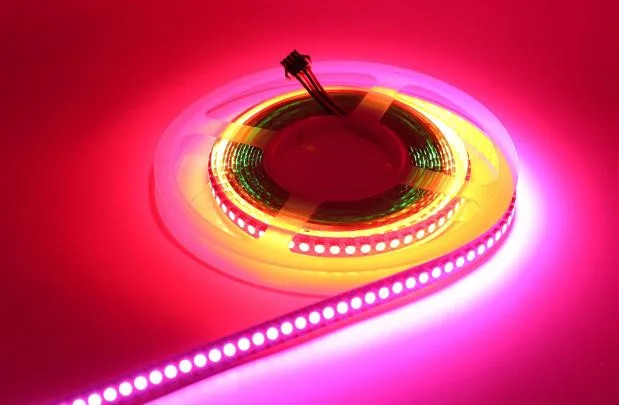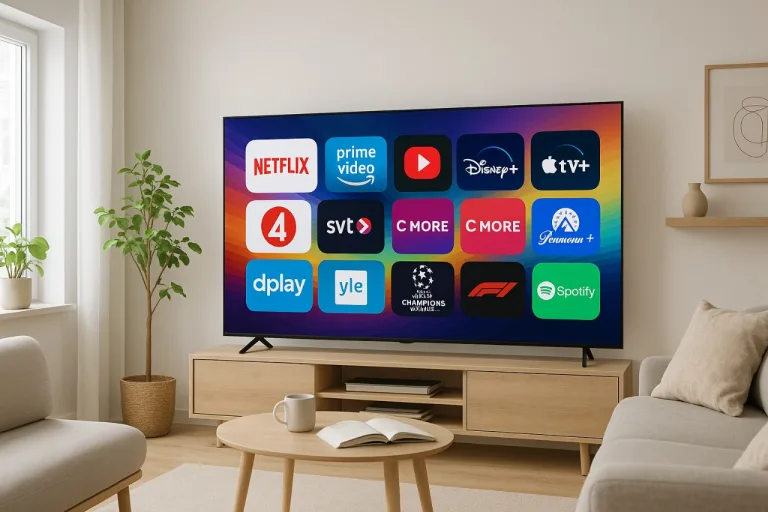How to Choose the Right LED Strip Lights for Your DIY Renovation Projects
When you start a DIY renovation project, many things go through your mind. You think about colors, furniture, and decorations. But one thing people often forget is lighting. Good lighting can change how your space looks and feels. Bad lighting can make even the best designs look dull.
Whether you’re updating a kitchen backsplash or creating ambient lighting in your home office, Hitlights offers easy-to-install LED Strip Lights for every need. With the right lighting, your DIY project can really shine!
Today, let’s talk about how to pick the right LED lighting for your DIY projects.
Why LED Strip Lights?
First, let’s understand why LED lights are a good choice.
LED stands for Light Emitting Diode. These lights are different from the old bulbs your parents or grandparents used.
They are better because:
- They use less energy.
- They last longer.
- They stay cool.
- They come in many shapes and colors.
Because of all these reasons, LED strip lights are perfect for your DIY projects.
Think About Your Space
Before buying any lights, look at your space. Is it a big room or a small room? Does it get a lot of sunlight or not much? What will you do in this room?
For example:
- In a kitchen, you need bright lights to cook and clean.
- In a bedroom, you want softer lights to relax.
- In a study room, you need lights that help you focus.
Every room has a different purpose. So the lighting should match what you do there.
Brightness Matters
Brightness is very important. But how do you know how bright a light is?
LED lights tell you brightness in lumens, not watts. Watts show how much power a bulb uses. Lumens show how much light it gives off.
Here’s a simple guide:
- 200-400 lumens for night lights.
- 400-800 lumens for soft, cozy rooms.
- 800-1600 lumens for kitchens and workspaces.
- 1600 lumens or more for big open areas.
Always check the lumens before you buy. It will help you pick the right brightness.
Color Temperature
LED lights also come in different colors. But not rainbow colors—light colors!
This is called color temperature. It is measured in Kelvin (K).
Here’s what you need to know:
- 2700K-3000K: Warm white (yellowish light, cozy and soft).
- 3500K-4100K: Cool white (neutral, bright but not too harsh).
- 5000K-6500K: Daylight (blue-white, very bright, almost like sunlight).
For bedrooms and living rooms, warm white is nice. For kitchens and bathrooms, cool white works great. For garages or workspaces, daylight is helpful.
Pick the Right Fixtures
You don’t just need the bulb. You need the right fixture too. The fixture is what holds your light.
Some common LED fixtures include:
- Recessed lights: These go into the ceiling. Great for modern looks.
- Pendant lights: They hang from the ceiling. Perfect for kitchens and dining rooms.
- Track lights: They can be moved and pointed. Good for highlighting art or shelves.
- Wall sconces: These go on the wall. Good for hallways or beside beds.
Make sure the fixture fits your space and style.
Don’t Forget Dimmable Options
Sometimes you want bright light. Other times you want a softer glow. That’s where dimmable LED lights help.
With dimmable lights, you can change how bright the light is, using a dimmer switch. But be careful! Not all LED lights can dim. Always check if the bulb says “dimmable” before you buy.
Also, make sure the dimmer switch works with LED lights. Some old dimmers don’t work well with LEDs.
Energy Efficiency Saves Money
One big reason people love LEDs is energy savings. LED lights use much less power than old bulbs. That means your electricity bill will be lower.
For example:
- A 10-watt LED can give as much light as a 60-watt old bulb.
- LEDs can last 10 to 20 years, depending on use.
Spending a little more on LED bulbs now will save you money for many years.
Safety First
LED lights are also safer. They don’t get hot like old bulbs. You can touch them even after they’ve been on for hours.
If you have kids or pets, this is great. Less chance of burns or accidents.
Also, many LED bulbs are made of plastic, not glass. So if they fall, they don’t shatter like old glass bulbs.
Check for Quality
Not all LED lights are the same. Some are good. Some are cheap and don’t last.
When you shop, look for trusted brands. Read reviews online. See what other people say.
Also, check if the bulbs have a warranty. A good company will give you a warranty of at least 3 to 5 years.
Smart LED Lights
There are even smart LED lights now! You can control them with your phone or voice.
- Change colors.
- Set timers.
- Dim the lights.
- Turn lights on or off when you’re not home.
Smart lights cost more, but they give you cool features. If you love gadgets, you’ll love these lights.
Placement Is Key
Where you put your lights matters a lot.
- Overhead lights: Good for full room lighting.
- Task lights: Good for reading, cooking, or working.
- Accent lights: Good for making certain things stand out (like a painting or plant).
Sometimes one type isn’t enough. You might need a mix. For example, in your kitchen, you can use overhead lights and add under-cabinet lights for cooking.
Test Before You Install
If you’re not sure, test your lights before final installation.
- Plug the bulb into a lamp.
- See how it looks at night and during the day.
- Move it around if you can.
It’s better to test first than to install and regret later.
Budget Wisely
LED lights can cost more at first, but they save money in the long run.
Don’t go for the cheapest option. Cheap lights often break fast. Pay a little more for quality.
Make a budget for your whole project. Include:
- Bulbs
- Fixtures
- Dimmers
- Possible smart controls
Having a plan helps you avoid surprise costs.
Get Help If Needed
DIY is fun. But sometimes it’s okay to ask for help.
If you need to change wiring, install new switches, or put in new ceiling lights, call an electrician. Safety comes first.
A professional can also give you tips on placement and types of lights.
Conclusion
Lighting may seem small, but it makes a big difference in your DIY renovation project. The right LED lighting can make your space feel cozy, bright, or even magical.
Think about brightness, color, fixtures, and where you place the lights. Choose good quality. Test before installing. And always put safety first.
With the right LED lights, your DIY project will not only look great but feel great too. Now go light up your home and enjoy your beautiful work!




